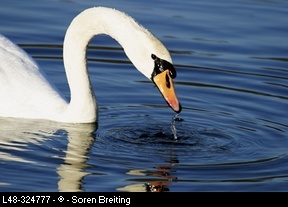Swan
 As we are aware in the United States, in any number of media (film, literature, music, dance), the swan is a symbol of peace and tranquility. What we maybe aren’t aware of, however, is that swans are closely associated with many Native American peoples. It is actually connected to one of the most sacred mysteries of the Lakota/Dakota religion, in which the swan acts as a messenger of faith.
As we are aware in the United States, in any number of media (film, literature, music, dance), the swan is a symbol of peace and tranquility. What we maybe aren’t aware of, however, is that swans are closely associated with many Native American peoples. It is actually connected to one of the most sacred mysteries of the Lakota/Dakota religion, in which the swan acts as a messenger of faith.
In England, the swan is a symbol of loyalty and strength. Swan is a royal bird and it is even illegal to kill a swan in the United Kingdom. Swans are present in many European fairy tales, symbolizing chastity (partly because of their white plumage), artistry, and beauty. On a related note, swans are associated with fidelity, loyalty in marriage, and monogamy, because they mate for life. Man’s connection with swans goes back further than European fairy tales, however.
The swan was seen as a traditional symbol of beauty and grace in ancient Greece, and was sacred to Aphrodite. The swan was also sacred to Apollo, the god of music (among other things), in Greek mythology. At the time, the people believed that the swan sang a sweet and beautiful song when people died. The swan song was supposed to be the most beautiful song the bird had ever sung, since swans aren’t known for their singing.
The swan is one of the most powerful and ancient totems. Even the word swan is one of the oldest names in the English language, coming from the Anglo-Saxons. Most of swan’s associations come from its appearance—it is a graceful, white bird, and the largest of the waterfowl. But swans are also powerful birds. From this, they reflect the power and longevity that is possible when we awaken to the power and beauty within ourselves. Swan is not only a widely known symbol, but also a very personal one to the individual.
Information from Ted Andrews's Animal-Speak, Jessica Dawn Palmer's Animal Wisdom, and Steven D. Farmer's Power Animals.

